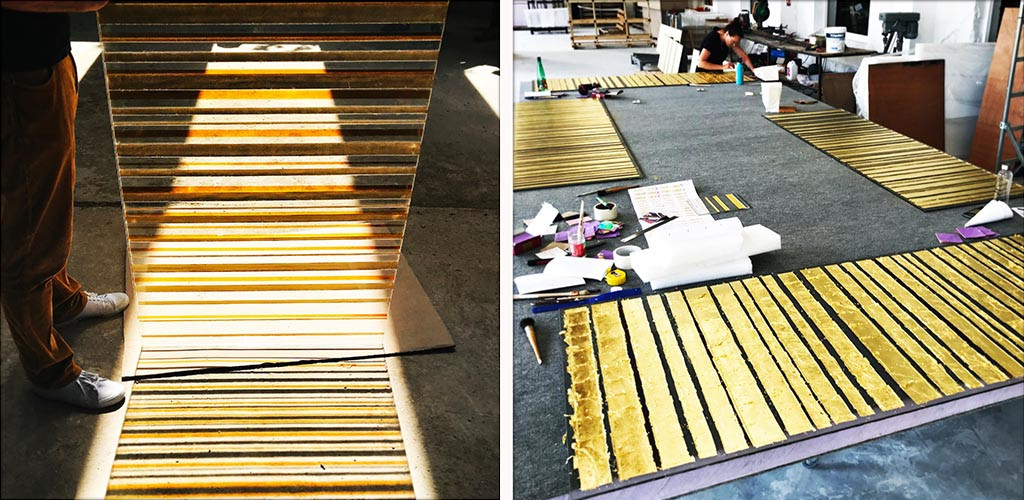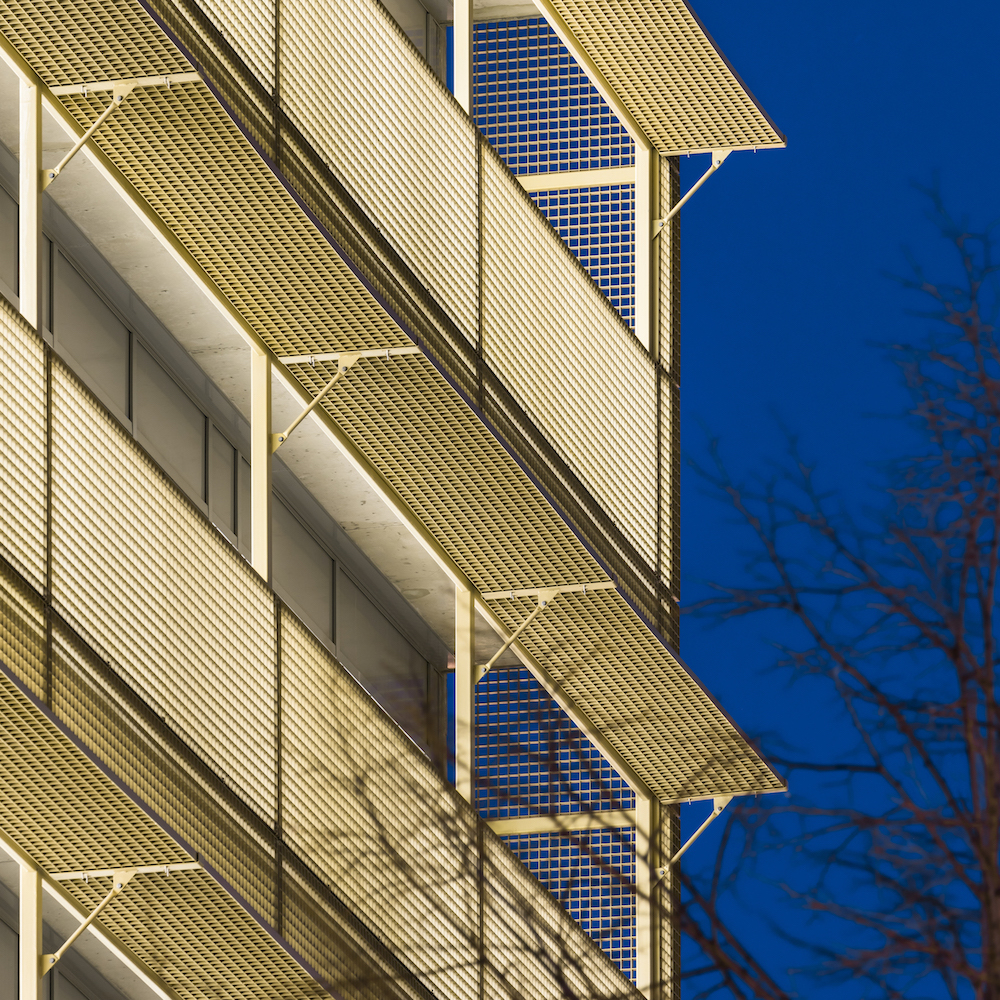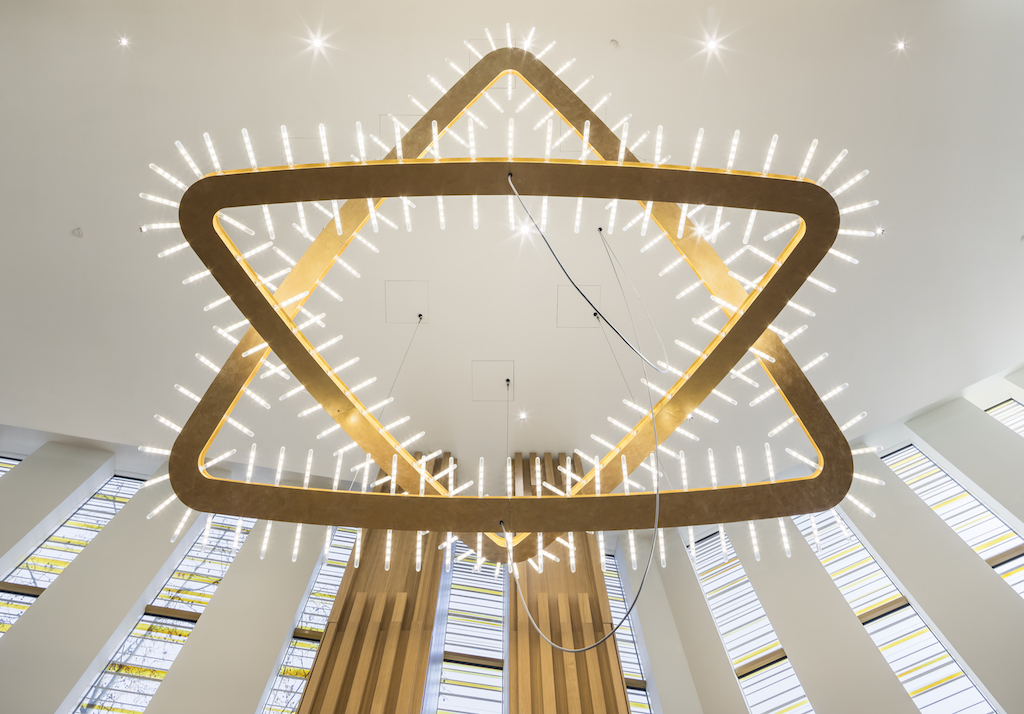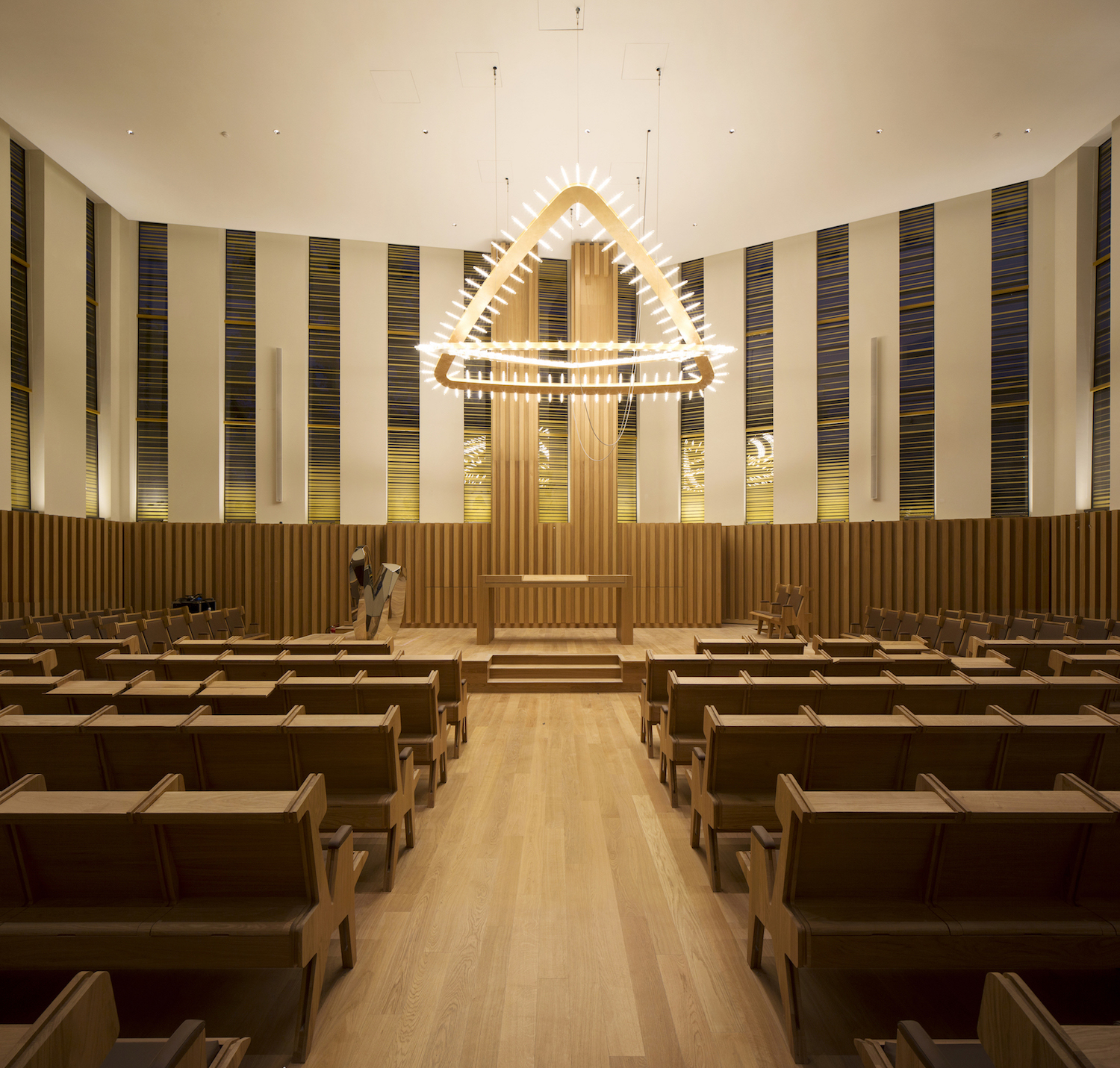« A hybridised combination of different times. » Emmanuel Barrois, master glassmaker
This interview of Emmanuel Barrois, master glassmaker, is an excerpt from AA’s special issue on the European Center for Judaïsm, by Stéphane Maupin and Bruno Fléchet.
Interview led by Jean-Philippe Hugron
L’Architecture d’Aujourd’hui: How did your collaboration begin?
Emmanuel Barrois: Stéphane and I have known each other for a few years, though we had never worked together before. About a year ago, he offered me to collaborate on his project for the European Center for Judaism, because they were looking for someone to create a decorative glass ceiling. But what kind of design would be right for the place? What kind of technique should we use? They gave us absolutely no directions. So we worked together to imagine a graphic pattern based on horizontal lines, inspired by the Jewish prayer shawl — the ‘tallit’. It features thin stripes that are usually black or blue, but may sometimes be gold-coloured. So taking gold as a starting point, we developed several solutions. All of them felt like they could really help create a warm atmosphere, as well as soften the very austere feel of the building, which essentially consists of a monolithic block of concrete and metal.
In the end, which techniques did you use?
In total, we have about a hundred panels, each of them unique, alternating between yellow lines, golden and transparent, and lines made from gold leaf. For the gilded lines, we had to etch 1 millimetre deep into the surface of the glass so we could apply the gold leaf on ground glass. For the transparent yellow lineswe used a traditional technique: medieval stained glass. To create the colour, we applied silver salts — a powder obtained by mixing different silver compounds with clay, that we can then sprinkle irregularly over the glass to stain it. When placed in the oven, it becomes transparent. The resulting “silver yellow” is never entirely consistent.
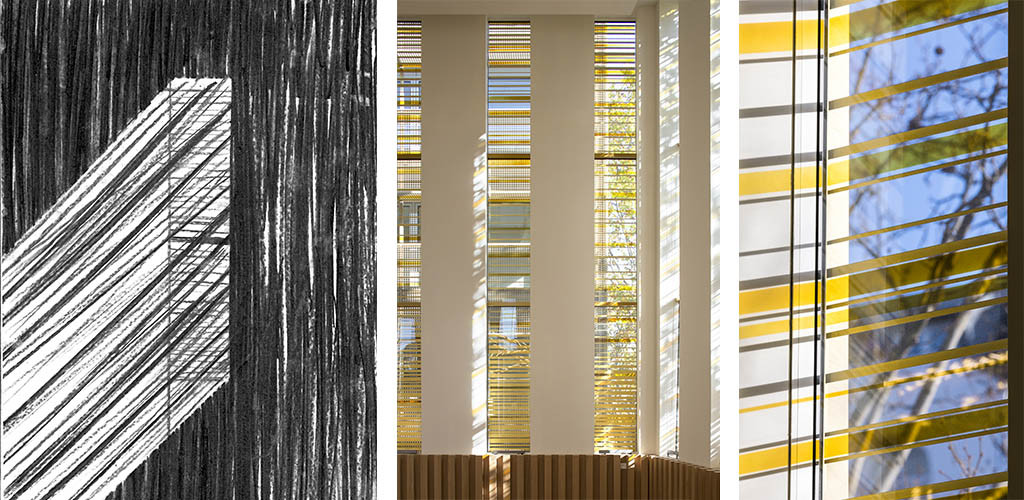
Why these variations?
We were looking for a kind of precious feel. And we also wanted our work to convey the weight of traditions, which is an essential feature for any place of worship. We wanted the synagogue to be both soaked in light and for the light to be tinged and heightened as it interacted with the gilt parts. In the end, it is a complex design, which allows a particularly broad range of effects.
What about safety standards?
In terms of safety, we were not held to the same standards as for the entrance hall, where the glazed panels weigh around 300 kg/sqm. Those things are heavy-duty, they’re meant for… war. So we chose a ‘technological’ glass, which provides thermal insulation and delivers a particular acoustic quality within the hall. We also needed to shield the synagogue from the hustle and bustle of the city.
What does this project say about your work?
This project is a hybridised combination of different times, technologies and techniques. We are constantly looking to instil a certain quality in architecture by reintroducing handwork into all our projects. Artisanal know-how lends a particular quality to the art of building. Having said that, we also need to be familiar with techniques used in the industry today and, beyond that, find ways to create what it can’t produce on its own. Because ultimately, that is the point of our job, to combine things that are would usually never combined.

